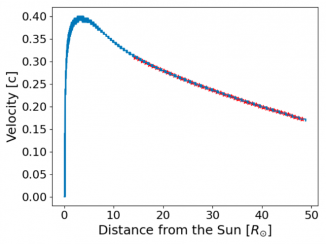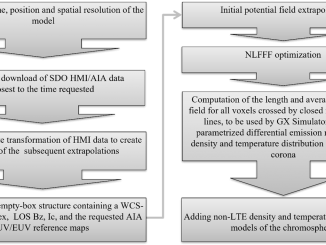Two-element interferometer for millimeter-wave solar flare observations, by Yu et al.
Solar radio emission can be significantly influenced by Earth’s atmosphere when transmitting towards the Earth’s surface, due to atmospheric turbulence and the absorption of vapor and oxygen molecules etc. Consequently, antennas receive signals with a ‘dither’ component, indicating a noise signal exhibiting random variations. As a result, the sensitivity of observing systems distorts severely , especially for weaker radio bursts in the millimeter passband. Weak bursts can be usually observed […]



